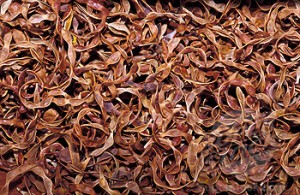 Population of Australia 2016
Population of Australia 2016
The estimated population for 2016 of the Australian continent is about 36.25 million people. It is considered to have one of the lowest population densities in the entire world, approximately 2.8 people per square kilometer. The Australian continent is made up of Commonwealth of Australia, Papua New Guinea, Timor, West Papua, and Papua. Though some typically may think so, New Zealand is actually not a part of the continent. The largest portion of the population of the continent comes from the Commonwealth of Australia. Some other names that the continent is known by are Sahul, Australinea, and Meganesia. The five most populous cities of the continent are in the Commonwealth of Australia: Sydney, Melbourne, Brisbane, Perth, and Adelaide. Each of these cities has a population of at least over 1 million inhabitants.
Geography of Australia 2016
Australia is considered to be the smallest continent, occupied by people, in geographic size. The continent is made up of only 3,310,000 square miles. People sometimes refer to it as an island continent, since the majority of its land is made up of the island of the Commonwealth of Australia. In fact, out of the 3.31 million square miles of the whole continent, the Commonwealth of Australia makes up 2.941 million square miles, a large majority of the total land mass. The large size of the island allows for various geographic features. The northeast is characterized by subtropical rainforests. Also, off the northeast coast of the island is the Great Barrier Reef, the world’s largest coral reef. In the southeast, southwest, and eastern portions of the island, there are quite a few mountains and mountain ranges. One of these mountains is Mount Kosciuzko, the highest mountain of the Australian mainland, reaching 7,310 feet. This mountain is a part of the Great Dividing Range that runs along the eastern coast of the island. The land is typically dry and is considered to be the flattest continent in the world.
The Commonwealth of Australia is broken up into six states: New South Wales, Queensland, South Australia, Tasmania, Victoria, and Western Australia. Also, there are two larger territories, known as the Australian Capital Territory and the Northern Territory. Tasmania is the only state without one of the top five most populous cities. The major city of New South Wales is Sydney, of Victoria is Melbourne, of Queensland is Brisbane, of Western Australia is Perth, and of Southern Australia is Adelaide.
Australian Education 2016
Education is a very important part of the human development of every Australian citizen. It is required to attend school or attend home school in all parts of Australia. However, the individual states actually regulate and manages the schools in the states. Even though the overall areas are similar, the states also decide what curriculum to be taught in the schools. Required schooling lasts until an individual is 16 years old. However, when a student reaches 16, they have the option of attending a Vocational Education and Training (VET) program or a Technical and Further Education System (TAFE). VET is intended to help educate people in certain skills and techniques for careers and jobs that do not need a degree. Even though each state regulates and manages these programs, if a student has been VET certified for a certain career in one state, he or she is allowed to use such certification in another state as well. Most of the universities in Australia are government-funded. The oldest university, founded in 1850, is the University of Sydney. Despite the fact that Australia is deemed to be one of the most expensive places to attend a university, it also ranks having one of the highest graduation rates amongst countries in the Organization for Economic Cooperation and Development. Overall, the country tends to score in the top five of thirty developed countries.
Australian Health Care 2016
Since 1975, Australia has achieved universal health care coverage, which is known as Medicare, which has helped them have the fourth highest life expectancy in the world. Any citizen, permanent resident, visitor, people with temporary visas from countries with arrangements with Australia, and even students studying abroad in the country all receive health care coverage in Australia. Many people that are not eligible for Medicare can still receive some form of assistance and help through non-governmental organizations, like the Australian Red Cross. Also, organizations like the Australian Commission on Safety and Quality in Health Care exist in order to ensure that health-care standards are high. The Royal Australian College of General Practitioners is the agency that makes the regulations and standards for general practice.
Most of the coverage for health care comes from tax revenue, mainly by a levy tax of about 1.5%. If a person prefers to attend a private practice, he or she may have to pay out of pocket for the difference between the subsidized health care cost (cost at a public health care facility) and what the provider charges. However, both the federal and the state government provide most of the funding for the health care system. About 71% of the funding comes from the governments. The Pharmaceutical Benefits Scheme is the agency that takes care of reimbursing pharmacists for the cost of the medications that they prescribed. There is a certain list and type of medications that the PBS will cover. The sponsor of the drug/medication is who sets the price of the specific medication. If a certain drug will cost over $10 million annually, the government must approve of the coverage of the drug.
 Australian Cuisine 2016
Australian Cuisine 2016
Indigenous Australians, the oldest indigenous civilization known to man, has been a large influence on the modern cuisine of Australia. The general term for any sort of food, native to Australia, which was used in culinary dishes or medicines is bush tucker. Bush tucker can be anything from plants to meats. For example, one type of bush tucker is the wattleseed. Wattleseed is an Acacia plant that is typically ground and roasted. Some people report that it has a taste of cocoa, coffee, and hazelnut. Other types of bush tucker are kangaroo and emu. Both meats are served throughout the country and continent. Kangaroo tends to be a much more lean meat than meats like beef and pork, and emu is a protein-packed, low-in-fat, and flavorful meat, eaten fairly often in Australia. The interesting thing is that Australians eat both kangaroo and emu, which are both found on the Coat of Arms of the country. Lastly, another modern dish is the salt and pepper squid. The main difference between this and calamari is that the salt and pepper squid is only lightly floured before frying.
Language in Australia 2016
Although no official language, the closest thing is English. Around 81% of people speak English in the home. Accompanied with English, the language in Australia has a strong Australian dialect and accent that make the language slightly unique to the area. In Papua New Guinea, there are three official languages: English, Tok Pisin, and Hiri Motu. Small portions of the country speak Greek, Mandarin, Chinese, and a few other Asian languages. While English is the language spoken in government and education, Tok Pisin is spoken in the workplace. Hiri Motu is mainly spoken in the southern region, where Tok Pisin is not spoken. Nonetheless, many indigenous and local languages are spoken amongst tribes throughout the respective regions of the continent.
The Australian Contient


